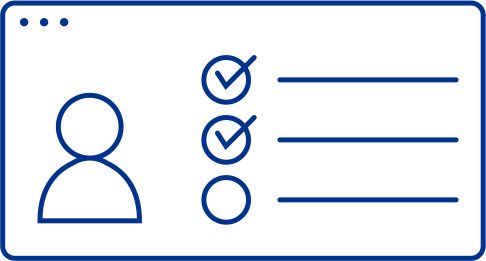ŔÖÓ㣨LeyuŁ©ĚĺÓýąŮÍř
Having laid the groundwork for a successful sale process, as outlined in our ±č°ů±đ±ąľ±´ÇłÜ˛őĚý˛ą°ůłŮľ±ł¦±ô±đ it's crucial to shift focus to a critical phase: due diligence. This comprehensive examination of your business by potential buyers can make or break a deal. This guide provides sellers with the knowledge and strategies to navigate this complex process effectively, creating a smoother path to a successful transaction.
Due diligence: scope and significance
ŔÖÓ㣨LeyuŁ©ĚĺÓýąŮÍř
Due diligence is not merely a formality; it's a rigorous process of verification and risk assessment. Buyers meticulously pore over various aspects of the target business, including:
- Financial Due Diligence:ĚýAnalyzing historical financial statements, tax returns, and internal financial records to assess earnings quality, sustainability, and working capital efficiency.
- Legal Due Diligence:ĚýReviewing contracts, licenses, permits, litigation history, and corporate governance documents to identify potential legal risks and liabilities.
- Operational Due Diligence:ĚýEvaluating operational processes, IT systems, supply chain management, and key performance indicators to assess efficiency, scalability, and potential integration challenges.
- Commercial Due Diligence:ĚýAnalyzing market position, competitive landscape, customer relationships, and growth prospects to make a judgment over the target's long-term viability and value drivers.
- Specialized Due Diligence: Depending on the industry, additional areas may include ESG, regulatory, anti-money laundering (AML), Know Your Customer (KYC), and technical due diligence.
Navigating the due diligence process: best practices for sellers
ŔÖÓ㣨LeyuŁ©ĚĺÓýąŮÍř
- Proactive Preparation is Key:Ěý
- Early document assembly: Begin gathering and organizing relevant documents well in advance of any buyer requests. This includes financial records (audited statements, tax returns, budgets, projections), legal documents (contracts, licenses, IP documentation), and operational information (process flows, KPIs, organizational charts).
Ěý
- Early document assembly: Begin gathering and organizing relevant documents well in advance of any buyer requests. This includes financial records (audited statements, tax returns, budgets, projections), legal documents (contracts, licenses, IP documentation), and operational information (process flows, KPIs, organizational charts).
- Data room organization and security:
- Structure for clarity:ĚýEstablish a well-structured and secure digital data room using a platform specifically designed for M&A transactions. Organize documents logically with clear folder structures, detailed indexing, and comprehensive search functionality.
- Access control & security:ĚýImplement robust access controls to ensure confidentiality and track buyer activity within the data room. Activate features like watermarking and download restrictions to protect sensitive information.
Ěý
- Vendor due diligence (VDD) as a strategic tool:
- Proactive transparency:ĚýCommission a pre-emptive financial VDD conducted by a reputable firm such as ŔÖÓ㣨LeyuŁ©ĚĺÓýąŮÍř. This demonstrates transparency, creates a third-party validation of your financials, and can help streamline the buyer's due diligence process.
- VDD focus areas:ĚýA comprehensive VDD typically includes a Quality of Earnings (QoE) analysis, working capital review, and key contract analysis.
Ěý
- Anticipate and address buyer concerns:
- Develop Q&A documents:ĚýDraw up detailed responses to common due diligence questions related to financial performance, customer concentration, key employee retention, litigation history, and regulatory compliance.
- Proactive disclosure:ĚýGet ahead of any potential red flags or areas of concern by addressing them upfront. Transparency builds trust and allows for a more realistic assessment of the transaction's viability.
Ěý
- Maintain business continuity:
- Delegate effectively:ĚýWhile due diligence takes up significant time and resources, it's crucial to maintain focus on core business operations too. Delegate due diligence tasks effectively to avoid overburdening key team members and safeguard business continuity.
- Communication is key:ĚýKeep your management team informed and engaged throughout the process. Address any potential employee concerns and anxieties about the possible sale to minimize distractions and maintain morale.
Ěý
- Transparency and disclosure:
- Honesty is the best policy:ĚýAttempting to conceal information or misrepresent the business will likely backfire, potentially destroying the deal and damaging your reputation.
- Open communication:ĚýCultivate open communication with potential buyers, addressing their questions and concerns honestly and transparently.
The value of experienced sell-side advisors
ŔÖÓ㣨LeyuŁ©ĚĺÓýąŮÍř
Navigating the complexities of due diligence requires specialized expertise. Experienced M&A advisors, including investment bankers and lawyers, provide invaluable guidance and support throughout the process. They can help:
- Prepare for due diligence:ĚýIdentify potential areas of concern, gather and organize relevant documentation, develop impactful presentations for buyer meetings, and anticipate buyer questions.
- Negotiate favorable terms:ĚýProtect your interests during negotiations, ensuring that the final transaction agreement reflects a fair and equitable allocation of risk.
Conclusion
ŔÖÓ㣨LeyuŁ©ĚĺÓýąŮÍř
Due diligence is a critical stage in any M&A transaction. By understanding the scope of due diligence, proactively preparing for the process, and engaging experienced advisors, sellers can confidently navigate this complex phase, maximizing value and ensuring a smooth transaction.


